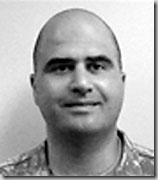All were submitted on their merits. All except one was a straight legal affirmance.
In United States v. Carney, the court themselves found two errors that needed to be corrected. The convening authority failed to suspend the bad conduct discharge as agreed in a pretrial agreement, and a multiplicity issue was reviewed for plain error and granted. The sentence as adjudged was affirmed.
 Court-Martial Trial Practice Blog
Court-Martial Trial Practice Blog












